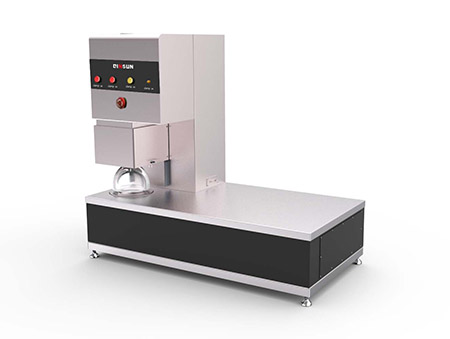-
Artificial blood vessel membrane rupture strength tester
Edited by:Read:The artificial blood vessel membrane rupture strength tester is composed of a programmable controller, a touch screen, a force sensor, a transmission device, an on-board printer, etc. It provides Chinese and English menu display, and has a man-machine dialogue to set various parameters and automatically run the test mode. In addition, a production unit is added, and the production batch is input by machine, so that the test results are more standardized and standardized. In terms of information security, three-level passwords are used to make information safe and reliable.
1. The test control range includes:
Nominal capacity, core rod displacement, print setting, test, up, down, time, calibration, verification and other function settings. With the on-board printing test, the test load and sliding data (initial force, average force, maximum thrust) can be displayed in real time. The test results are automatically judged, and if they fail, the automatic buzzer alarm will be activated, and the test data and results will be printed out by the printer for analysis.

2. Test principle:
To measure the pressure of water permeating a vessel, the apparatus shall include means to keep the sample sealed until leakage occurs. A suitable pressure sensor is also required
3. Test standard: YY0500-2004, GB/T7742
4. Technical parameters:
Operation interface: Simplified Chinese/English
5. Test standard: YY0500-2004, GB/T7742
6. Test procedure
A section is taken along the longitudinal axis of the blood vessel sample and smoothed and cut into a piece of uniform thickness. Place the sample over the opening of the test apparatus so that it completely covers the film, and if there are wrinkles, smooth out the wrinkles without distorting the braid. Secure the sample with a compression ring. Increase the pressure evenly. Record the pressure value when the blood vessel ruptures
7. Expression of results
The burst strength value of each sample shall be recorded in kilopascals (kPa), the size of the 11-diameter in square millimeters, and the inner diameter of the sample to be tested in millimeters.
The membrane rupture strength test uses a flat ring clamp to fix a piece of the artificial blood vessel sample to be tested on the elastic membrane, and increase the pressure under the membrane until the sample ruptures.
NOTE: This method is not suitable for artificial blood vessels with tightly woven structures.
- 2024-04-19Paper ring compression strength tester standards
- 2024-04-19Cupping tester standards
- 2024-04-19Rubber and plastic tensile tester standards
- 2024-04-19Taber 1750 wear-resistant tester standards
- 2024-04-19Stone Chip Resistance Gravelometer standards
- 2024-04-18Diaper absorption speed tester standards
- 2024-04-18Diaper leakage tester technical indicators
- 2024-04-18Paint film impact resistance tester standards
- 2024-04-18Low temperature brittleness tester principle
- 2024-04-18Battery separator permeability tester technical indicators



